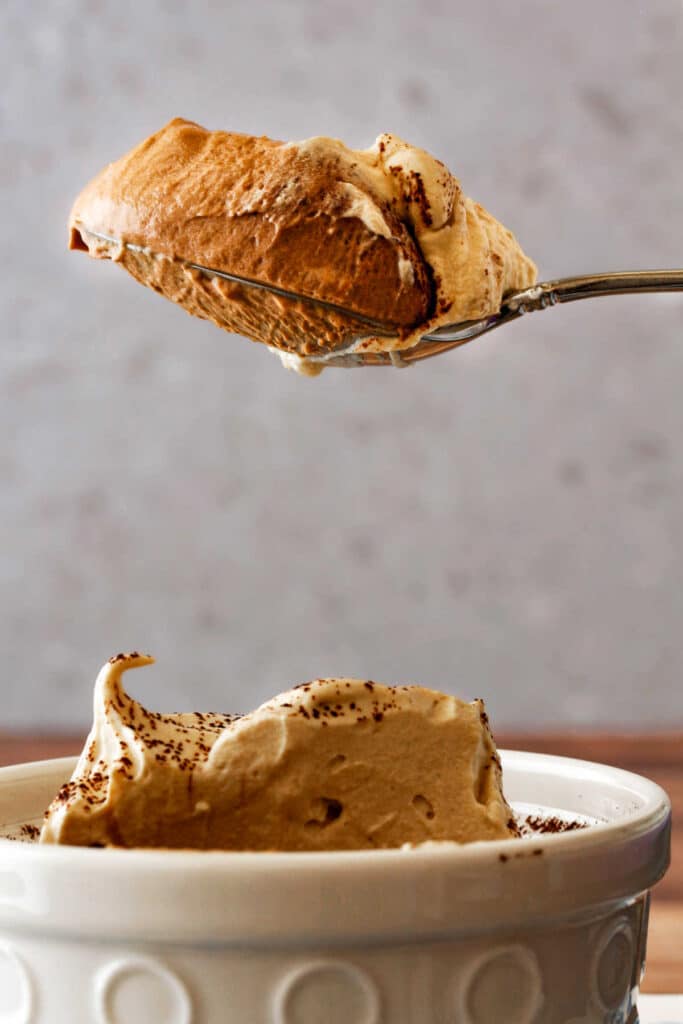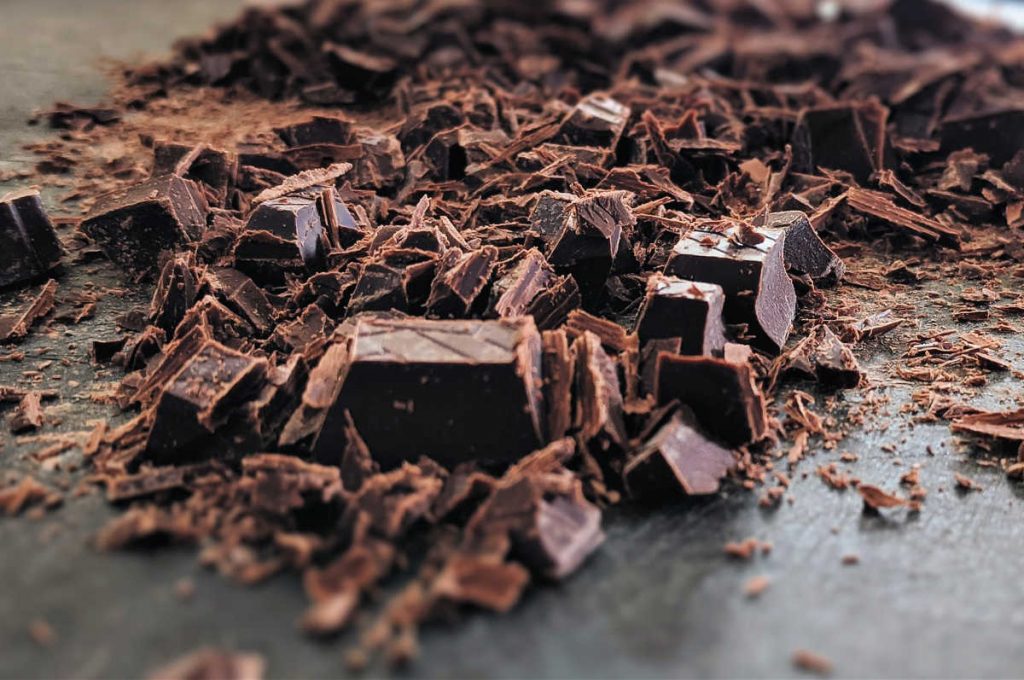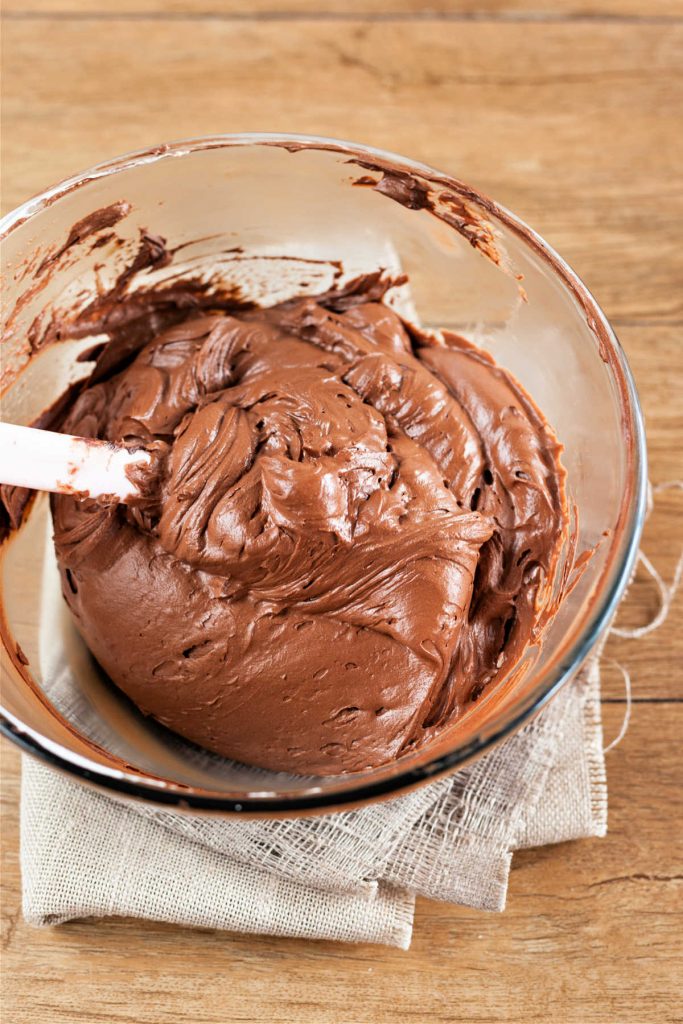If you’ve ever tried to make a smooth and creamy chocolate mousse, but it comes out all “bumpy” and weird, this post will answer the burning question “Why is my chocolate mousse grainy?” I’ll teach you why it gets grainy and also how to prevent it from happening in the future.
On a related topic, you may also be interested in learning how to fix broken ganache without changing its texture.
This post is part of my Fundamental Fridays series where I answer your baking and cooking questions. For ease of browsing, you can find all the posts in one place.

Understanding Graininess Starts with Understanding Chocolate
Okay, so what do we know about chocolate?
Chocolate is an emulsion–wee dry particles of cocoa liqueur suspended in the bunch of different fats that make up cocoa butter.
You’ve heard of chocolate’s seizing, right?
Pastry Chef Online Participates in Affiliate Programs. If you make a purchase through one of my links, I may earn a small commission. For more information click to read my disclosure policy
It seizes, or gets thick and clumpy, because you’re accidentally introducing just a Tiny Amount of liquid into the now-melted emulsion. Do you think the liquid is going to mix with the dry particles or the fat?
The dry, you say?
You are correct! Water is hardly going to play nicely with the fat.
So How Does It Seize Up?

So now what has happened is that this Tiny Amount of water has stodged together the dry particles.
The only way to unstodge them is to add enough liquid that the particles can freely slide past each other as opposed to clumping up.
Ever added just a few drops of water to a big old pot of sugar, maybe in preparation for making caramel or something? The sugar just clumps up and gets stupid.
Keep adding water (or other liquid), though, and eventually, you’ll be able to stir it freely and the sugar will even dissolve. Lovely.
Same principle applies to chocolate.
What Happens When Chocolate Gets Cold
Here’s another thing we know about chocolate: you put it in the fridge, and it gets hard.
The fats firm up to the point of Rock Hard. So, if you start mixing melted chocolate together with some crazy cold cream, it’ll get all chippy on you.
Jenni Says: Once your mousse gets grainy, there really is no saving it. Learn the correct mixing procedure so your mousse won’t ever get grainy in the first place!
The Fix
To fool melted chocolate into playing nicely with water-based and cold ingredients, you’ve got to take both Things We Know About Chocolate into account: the specific makeup of chocolate and what happens to it when it gets cold.
As far as the emulsion deal, you’ll want to add in the fattiest ingredients first (yolks, butter). Next, fold in the ingredient that contains the most water without being cold.
And that’s egg whites. Plus, egg whites whip best at room-ish temperature, so you won’t have to really worry about the cold factor coming into play.
As far as the cream goes, you want to make sure that it’s not crazy cold.
Yes, they always tell you to make sure the cream is as cold as possible and to stash your bowl and beater over at the local Cryogenics Lab alongside Walt Disney before whipping.
Would you like to save this post?
But, here’s the thing, if your cream is too cold, you’re running the risk of chipping up your chocolate. Besides, when it comes to making mousse, I advise only whipping until barely soft peaks.
You’ll continue to “whip” the cream as you fold everything together.
If you whip to medium or stiff peaks, you run the risk of overwhipping during the folding process and ending up with grainy mousse at best and chunky buttery mousse at worst. Ew.
Consider whipping the cream by hand so you can more closely watch the texture and stop before over-whipping.
Correct Mixing Process To Keep Your Chocolate From Making Your Chocolate Mousse Grainy

Here’s the mixing method for making chocolate mousse (or any mousse, really).
To your melted chocolate and (possibly) sugar and/or butter, add in this order:
- stir in almost-all-fat yolks first
- then fold in the whites. These have enough water in them to keep the cocoa solids from clumping up. Plus, they’re at room temperature, so that will keep the cocoa butter in the chocolate from getting too hard.
- Last, fold in your slightly under-whipped and decidedly-cool-but-not-Arctic cream at the end.
Follow these rules, and you should be rewarded with smooth, silky, and airy chocolate mousse instead of grainy and sad mousse with little chips of chocolate throughout.
Difference Between Classic French Chocolate Mousse and American Versions
Any recipe for chocolate mousse that you see that adds whipping cream (or whipped cream) is a more American version of chocolate mousse.
Classic French chocolate mousse is enriched with egg yolks and lightened with whipped whites (meringue). A French chocolate mousse will be more intensely chocolatey since there is no dairy present to mute the chocolate flavor.
The texture is also somewhat denser than a mousse that has whipped cream added to it. Still, it has a delicate texture that when paired with the intensely chocolate flavor is really hard to beat.
Recipes
The chocolate mousse recipe on my site uses egg yolks that are cooked into a custard, and this type of mousse is pretty unlikely to get grainy. You’ll note that it uses whipped cream rather than a meringue to achieve a light texture. Definitely more in the American-style while keeping its French roots.
You could also give this mousse recipe a try. Here, you cook a sugar and egg mixture with some whipping cream until hot and thickened. Then you stir in the chocolate until melted. Chill that and then fold in additional whipped cream.
The nice thing about this recipe is, since all the ingredients that can cause the chocolate to seize up in the first place are hot, seizing should not be an issue at all.
Questions?
Thanks for spending some time with me today. I hope you’ve found this discussion of how to keep mousse from getting grainy helpful.
While you’re here, I’d love it if you could sign up for my newsletter. If you like the idea of me occasionally popping into your inbox, here’s how to make that happen:

Hi, y’all! I hope you’ve enjoyed this post and hopefully also learned a thing or two.
If you like my style, I invite you to sign up for my occasional newsletter, The Inbox Pastry Chef.
Expect updates on new and tasty recipes as well as a bit of behind-the-scenes action. I hope to see you there!
Take care, and have a lovely day.



Join in Today!

Love this! I was searching for some type of scientific reason for why my chocolate mousse this time turned out to be “chocolate chip” mousse- which, it is not bad, in fact I thought I had invented a new mousse. Just had some for dessert; however, I wanted to remake the wonderful chocolate mousse I made last week. What I did differently this time that stands out – I out the metal bowl in the freezer to chill (remembering that it took longer to beat whipping cream last time and how I had read this from so many other recipes)- also, I had melted the chocolate a bit before I started the recipe – kept on low and turned off perhaps 5 minutes before start of whipping egg whites- maybe too long… So I think you are right, the bowl perhaps was too “arctic chilled” along with the chocolate that perhaps cooled too much- it flaked/hardened as I folded in the whipped cream. Lesson learned.
Great! And now you can make the chocolate chip kind–or not–whenever you want! Very glad you found my post helpful, Wendy, and thanks so much for stopping by and commenting. 🙂
Love this, and glad I read it before attempting it tomorrow… I saw a real moose on the side of the road in Maine this past October, was cool, but not as cool as a life size portion of mousse molded into something I would attack, and probably eat most of, maybe wearing the antlers when you find me passed out the next morning…
Loved your article .
Chef can you please tell us the eggless version of this recipe..
Thanks in advance.
I don’t have an egg-free version of chocolate mousse, as such, but I would make either a starch-thickened egg-free chocolate pudding and then fold whipped cream into it (see this recipe: https://pastrychefonline.com/chocolate-pudding-2/ ) or, for more intense chocolate flavor, make a ganache and lighten it with whipped cream.